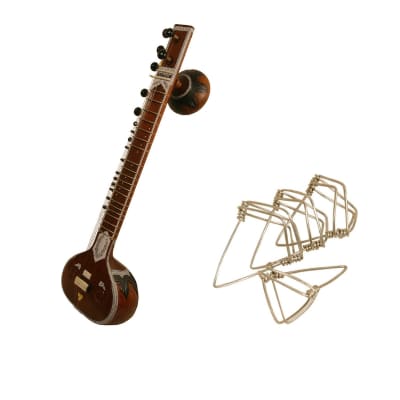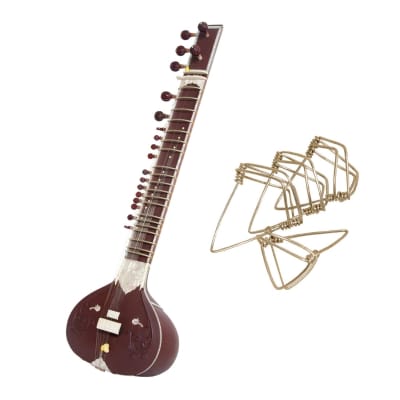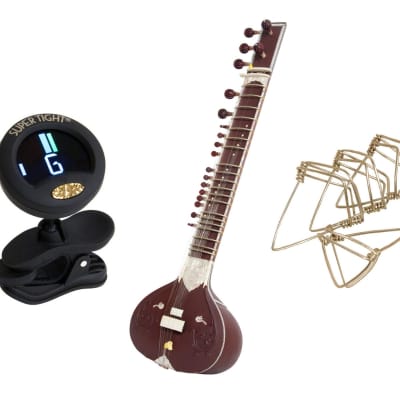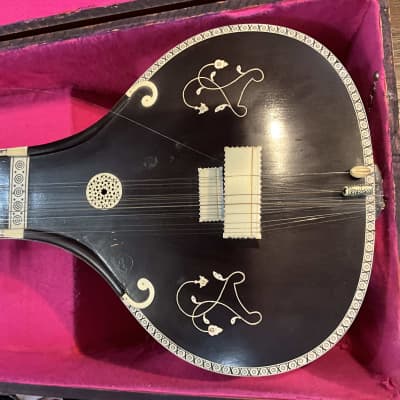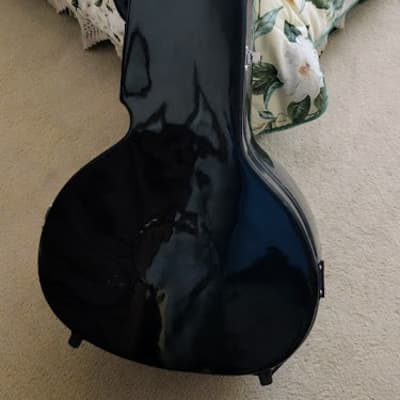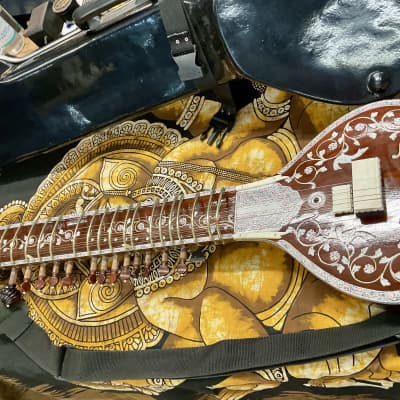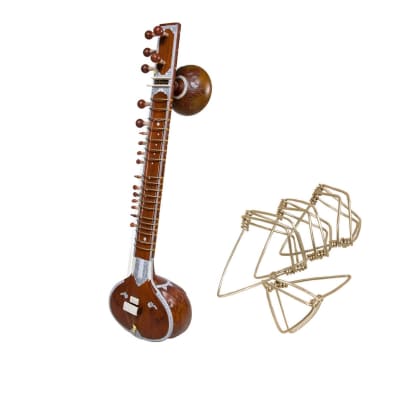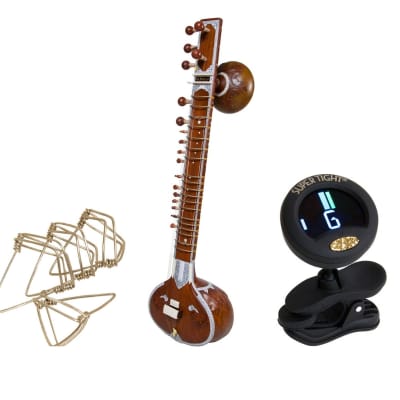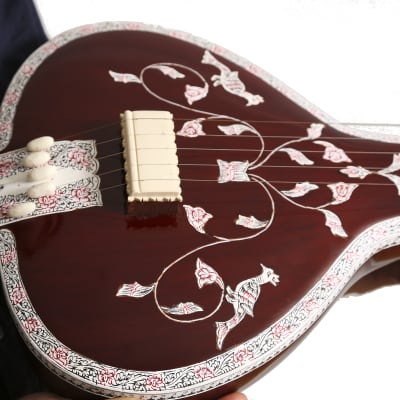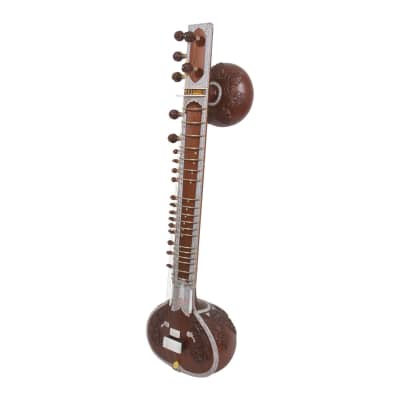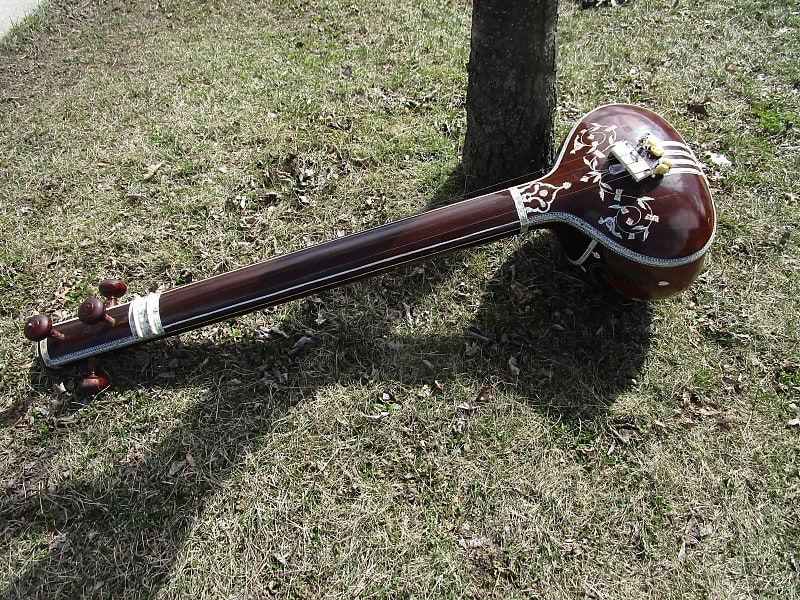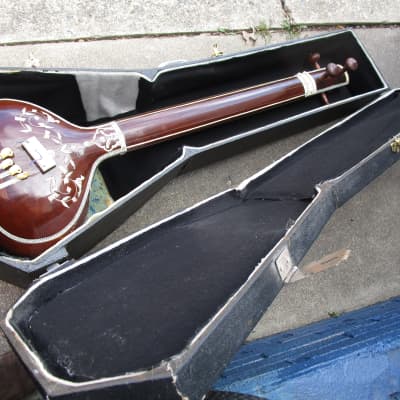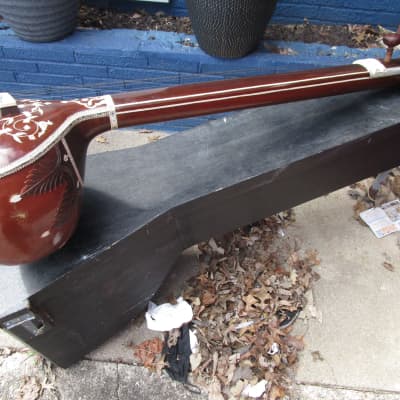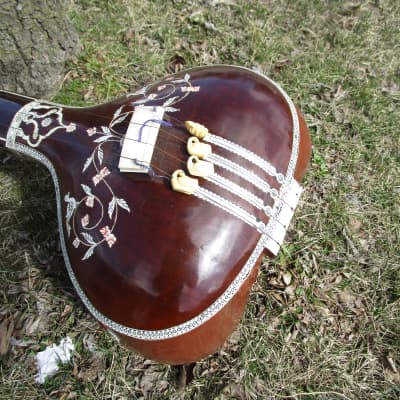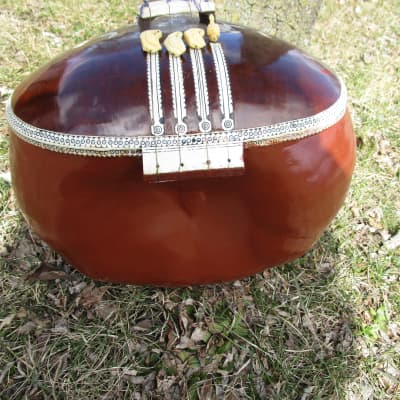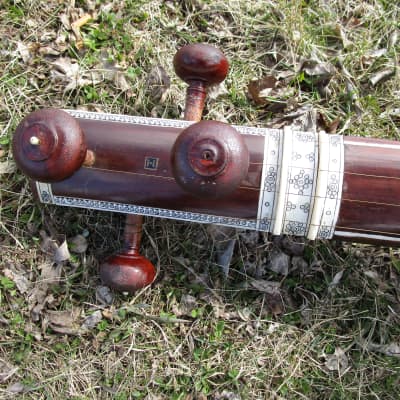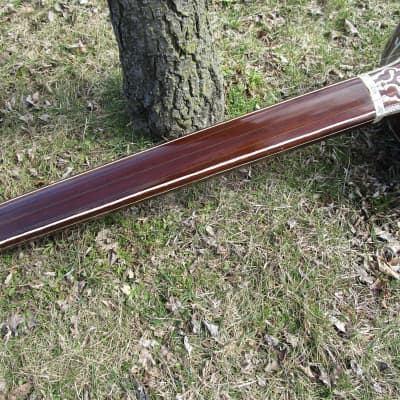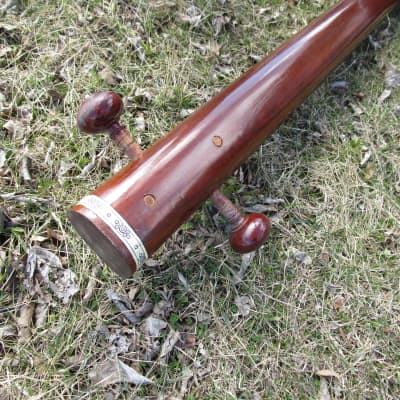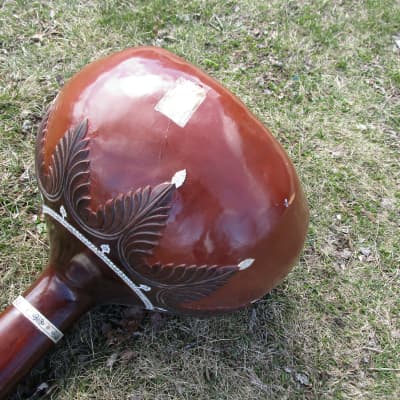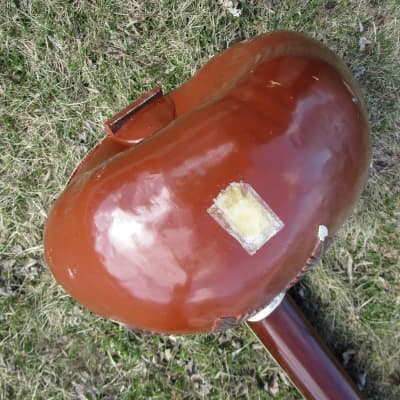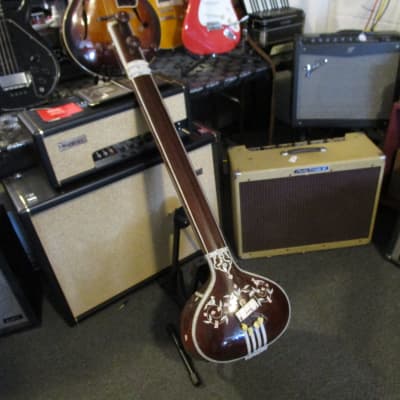1 time offer. $ goes back up Saturday
This instrument is in fairly good condition. It appears to be quite old especially looking at the case. It needs a fresh set of strings and tuning. We specialize in vintage guitars and amplifiers but we do sell a few sitars every year. So cosmetically it is in good shape with 1 repair on the bottom of the gourd as you see in the picture. Well taken care of there are no cracks anywhere and only a few chips in the laquer finish on the gourd. Made in India.
Comes with the original Weston hard case in rough cosmetic condition but fully functional including all the latches, hinges, and handle working properly. Perfect for safe shipping.
Instrument weighs 4 lbs. 12 oz.
Shipping weight 30 lbs. with
Shipping box is 56x18x18"
NOTE: If shipping is less then $300.00 depending where you are located,
then we will instantly refund you the difference.
Construction The body shape of the tanpura somewhat resembles that of the sitar, but it has no – as the strings are always plucked at their full lengths. One or more tanpuras may be used to accompany vocalists or instrumentalists. It has four or five (rarely six) metal strings, which are plucked one after another in a regular pattern to create a harmonic resonance on the basic notes of a .
Bridge and strings
The -rich sound and the audible movement in the inner resonances of tone is achieved by applying the principle of which creates a sustained "buzzing" sound in which particular harmonics will resonate with focused clarity. To achieve this effect, the strings pass over a table-shaped, curved-top , the front of which slopes gently away from the surface of the strings. When a string is plucked, it has an intermittent periodical grazing contact with the bridge. When the string moves up and down, the downward wave will touch a far point on the curve of the bridge, and as the energy of motion of the string gradually diminishes, these points of contact of the string on the bridge will gradually shift as well, being a compound function of amplitude, the curvature of the bridge, pitch, string tension and time. When the string is plucked, it has a large amplitude. As the energy of the string's movement gradually diminishes, the contact point of the string with the bridge slowly creeps up the slope of the bridge. Depending on scale, tension and pitch, this can take between three and ten seconds.
This dynamic process can be using a cotton thread between string and bridge: by shifting the thread, the grazing contact sequence is shifted to a different position on the bridge, changing the harmonic content. Every single string produces its own cascading range of harmonics and, at the same time, builds up a particular resonance. According to this principle, tanpuras are attentively tuned to achieve a particular tonal shade relative to the tonal characteristics of the raga. These more delicate aspects of tuning are directly related to what Indian musicians call raga svaroop, which is about how characteristic intonations are important defining aspects of a particular raga. The tanpura's particular setup, with the cotton thread as a variable focus-point, made it possible to explore a multitude of harmonic relations produced by the subtle harmonic interplay in time of its four strings.[]
Sizes and tunings
Tanpuras come in different sizes and pitches: larger "males", smaller "females" for vocalists, and a yet smaller version is used for accompanying sitar or , called tanpuri. These play at the octave so as not to drown out the soloist's lower registers. Male vocalists use the biggest instruments and pitch their tonic note (Sa), often at D, C♯ or lower, some go down to B-flat; female singers usually a fifth higher, though these tonic notes may vary according to the preference of the singer, as there is no absolute and fixed pitch-reference in the Indian Classical music systems. One female singer may take her 'sa' at F, another at A, sitaras tune mostly around C♯, sarodiyas around C, sarangiyas vary more between D and F♯, and bansuriyas mostly play from E. The male tanpura has an open string length of approximately one metre; the female is three-fourths of the male. The standard is 5-8-8-1 (so do′ do′ do) or, in Indian , Pa-sa-sa-Sa. For ragas that omit the fifth tone, pa, the first string is tuned down to the natural fourth: 4-8-8-1 or Ma-sa-sa-Sa. Some ragas that omit Pa and shuddha Ma, such as or , require a less common tuning with shuddha Dha (6th major/minor), DHA-sa-sa-SA or 6-8-8-1, or with the 7th, NI-s-s-S. With a five-string instrument, the seventh or NI (natural minor or major 7th) can be added: PA-NI-sa-sa-SA (5-7-8-8-1)or MA-NI-sa-sa-SA (4-7-8-8-1). Both minor and major 7th harmonics are clearly distinguishable in the harmonic texture of the overall sound, so when the Ni - strings are tuned into these harmonics, the resultant sound will be perfectly harmonious. Usually the octave strings are in steel wire, and the tonic, 4th or 5th strings in brass or bronze wire. If a string will be tuned to the 6th or 7th, a steel string is advised instead.

